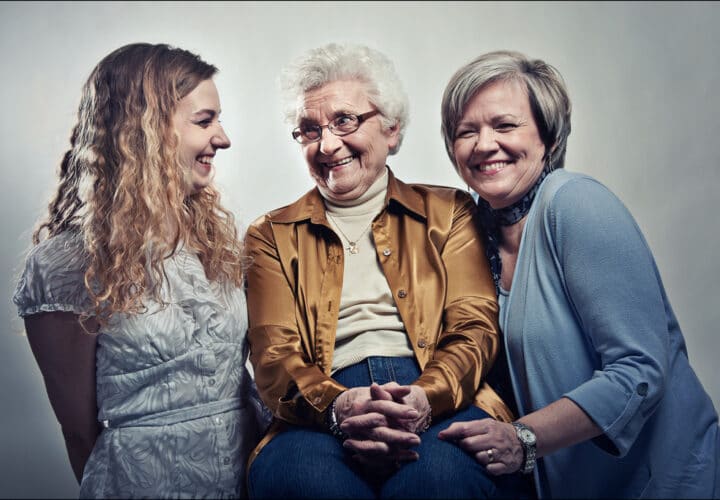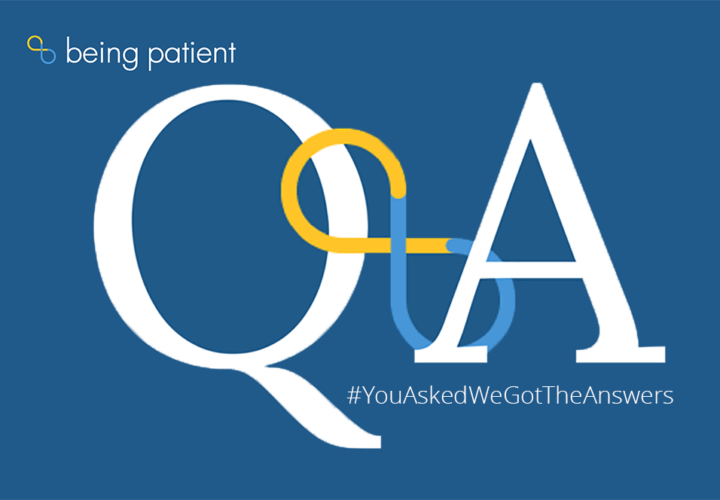A 2018 study identified seven modifiable risk factors for Alzheimer's: diabetes, midlife hypertension, midlife obesity, smoking, depression, cognitive inactivity or low educational attainment, and physical inactivity.
Two out of three Americans with Alzheimer’s and more than 60 percent of dementia caregivers are women. Initially, researchers believed that women are more likely to develop Alzheimer’s because they live longer than men. Dr. Marie Pasinski, a faculty member at Harvard Medical School and neurologist at Massachusetts General’s Institute for Brain Health, said researchers now understand that women are more susceptible to the disease because they face more risk factors than men.
- This study found that there are seven modifiable risk factors for Alzheimer’s, or factors we can control that may help reduce our Alzheimer’s risk: diabetes, midlife hypertension, midlife obesity, smoking, depression, cognitive inactivity or low educational attainment, and physical inactivity
- Pasinski said traditionally, women were not given access to as many opportunities as men were in education, the workplace and athletics, making them more susceptible to these risk factors and Alzheimer’s disease
- Because women are more likely to be caregivers for elderly parents or sick children, Pasinski said they may also experience more stress, increasing their Alzheimer’s risk
Being Patient spoke to Pasinski about her research on gender and Alzheimer’s, what lifestyle factors women can modify to reduce their Alzheimer’s risk and why women are more likely to develop the disease.
Being Patient: What does your research on gender and Alzheimer’s risk focus on?
Dr. Marie Pasinski: For a long time, we knew that women develop Alzheimer’s more frequently than men do, but we attributed it to our increased longevity. We now realize that even when you exclude that, women are two to three times more likely to develop Alzheimer’s than men. The other burden that women carry is that women are more likely to be the caregiver of patients with Alzheimer’s. In many ways, this is a woman’s disease. For too long, we haven’t focused on that, so I’ve been very interested in trying to figure out what makes women more susceptible to Alzheimer’s. While we don’t know the answer to that, I think it’s really important to understand that women have more risk factors than men do for Alzheimer’s. There are a number of what we call modifiable lifestyle risk factors. These are things that we have control over and for women, this is especially important.
Being Patient: Plaques appear in the brain decades before Alzheimer’s symptoms start to show. What lifestyle factors can we change to minimize our risk of developing Alzheimer’s later in life?
Dr. Marie Pasinski: When we think about Alzheimer’s, most of us just think about the diagnosis of Alzheimer’s, but that’s just one type of dementia. Dementia is the umbrella term. Alzheimer’s is clinically the most common diagnosis for dementia, but in fact, there are many factors that contribute to how our brain functions and the most common pathologic diagnosis for dementia is not Alzheimer’s; it’s actually what we call mixed dementia. So when we look under the microscope, we’re seeing more than just Alzheimer’s disease. Someone may have Alzheimer’s disease; they may have some underlying vascular disease; and then there are many other factors that could be playing a role. If someone drank a little too much alcohol, that can impair cognitive function. All of these things come together to impair cognitive function. It becomes really important for us to be aware of what these risk factors are and know that we can take steps to decrease our personal risk for Alzheimer’s.
Being Patient: As women face menopause, they have hormonal changes. How much do we know about whether hormones may factor into making women more susceptible to Alzheimer’s?
Dr. Marie Pasinski: There’s a lot that needs to be studied. We don’t really know how hormonal changes affect the brain, but what we do know is that hormones affect women in a lot of ways. For example, they interfere with sleep and we know that sleep is one of these modifiable risk factors. Often, when women are young, if they have discomfort with their periods, they may not sleep as well. Certainly during pregnancy, it can be hard to get a good night’s sleep. Then when women have children, women who are breastfeeding are sleep deprived. We realized that this continues throughout a woman’s life. Raising children decreases our sleep. We know that women who have children are more likely to be sleep deprived than men. Once the kids are raised, we become caregivers and take care of parents or ailing family members. Again, that takes a toll. It’s so difficult to quantify that effect, but we also know that women are more likely to suffer from insomnia than men are.
Being Patient: Does your research focus on how stressful life events, rather than genes, impact each gender differently and how that may make one gender more susceptible to Alzheimer’s than another?
Dr. Marie Pasinski: We don’t really understand that, but genes are important and we know they play a role. There’s this whole new area called epigenetics, which helps us understand how the lifestyle choices we make actually affect gene activity. They can turn genes on or off. Again, this gives us reason to think about these modifiable risk factors for Alzheimer’s that we have the power to change.
Being Patient: How might stressful events make one gender more susceptible to Alzheimer’s disease than another?
Dr. Marie Pasinski: We know that worrying is not productive or good for our brains. It’s hard to measure the effect of stress on the brain. Stress is impossible to quantify; what’s stressful for one person is not necessarily stressful for another and even within an individual, at one point in your life, something may be very stressful and maybe the next day, it isn’t. So there are many, many factors and it is more about how we manage stress and how it affects us. The best way to quantify stress is by self reporting; so if someone feels like they are under a lot of stress, that’s the best indicator that they are. It’s important to recognize that and for women to get support. I think that’s huge and women are shouldering so much responsibility: We’re juggling our careers, our families, we’re the caretakers, and I think we need to take care of ourselves.
Being Patient: Can exercise help women prevent Alzheimer’s?
Dr. Marie Pasinski: Exercise is one of the very best things we can do for our brain. Looking at overall risk factors, the best study was by Barnes. They tried to estimate the individual risk of seven modifiable lifestyle risk factors: They were low educational attainment, lack of cognitive stimulation, physical inactivity, depression, midlife obesity, hypertension/diabetes and smoking. That didn’t include all of the other risk factors like sleep and stress, but they found that the number one risk factor in the United States was physical inactivity. Traditionally, women have not been as physically active as men. I think about my mother who had Alzheimer’s disease and her generation didn’t do any type of physical activity or exercise. Even when I was growing up, that was before Title IX; there weren’t major sports teams for women. In general, women just are not as physically active and there are actually studies that show that throughout life, women are less physically active than men. Part of that may be due to child rearing and other responsibilities. We’re juggling a lot of things.
Being Patient: Do we have enough data to illustrate that exercise is helping women to maintain their brain health? How can you differentiate between its effect on men and women?
Dr. Marie Pasinski: It’s impossible when you think of all these factors that contribute to our cognitive function to tease out how much contributes. It varies based on the individual. But in the U.S., physical inactivity is considered to be the number one risk factor. I think for women who try to juggle a lot of things, it’s hard to find the time. I recommend avoiding prolonged sitting. We know that with prolonged sitting, our cortisol and blood sugar levels rise and that’s not good for your brain. Just getting up for a short period of time and walking around for a few minutes, then sitting back down, is a better way to set up your day. I used to sit in front of my computer for hours on end. Then when I became aware of these studies, I set a timer for 30 minutes. I’ll work for 30 minutes, then get up and do something. I think what we need to do, especially when we’re under stress, is to weave more physical activity into our days.
Being Patient: Should women measure their hormone levels and if they drop, take hormone replacement therapy?
Dr. Marie Pasinski: At this point, there’s no role for hormonal replacement in terms of dementia prevention. The initial study that came out from the Women’s Health Initiative back in 2003 showed that hormones are not good for us, but there were a lot of problems in that study. The women studied were older and they didn’t start the hormonal replacement until ten years after menopause or more. Since that time, we’ve been wondering if there’s a window where hormone replacement may be helpful and the studies so far have been inconclusive on that—if you started within a very narrow window of menopause and use it for a short time. There’s a lot of research going on in this area for women who are having trouble with hot flashes, menopausal symptoms and it’s interfering with sleep. Maybe that’s something that needs to be considered, but this decision needs to be made on a very individual basis with your physician.
Being Patient: Since women are more at risk for developing Alzheimer’s, what should we do to assess Alzheimer’s risk and prevent it?
Dr. Marie Pasinski: One of the most important things is staying on top of your physical health. In the one study that looked at seven modifiable risk factors, a number of those are medical issues: midlife obesity, hypertension, diabetes, smoking, depression and insomnia. So it’s really important for women to take care of themselves and be proactive. If you have any of those underlying conditions, make sure you’re getting the best treatment you can get and all of those medical problems under control. That will significantly decrease your risk of Alzheimer’s. I think the other thing is for women to get support. With my mom, I helped take care of her. Caring for my mom with Alzheimer’s was physically, mentally and emotionally exhausting, yet I had every resource one could ask for: the knowledge base, the financial resources, a wonderful supportive family, my kids were raised and I didn’t have to worry about losing my job when I took time off. My heart goes out to a lot of my patients’ families. I’m a neurologist for the Mass General Health Center. We care for patients with a low socioeconomic class and a lot of immigrant patients. I have a lot of single moms who have young children of their own and are caring for a family member or a parent with Alzheimer’s. I can’t even wrap my head around how they get out of bed in the morning with the stress level. I think we really need to provide more support for caregivers and women.
Worldwide, the number one risk factor for Alzheimer’s is considered to be low educational attainment and lack of cognitive stimulation. When you think about women in the U.S., traditionally, women weren’t given access to the level of education that men were. Even when we are, it is more difficult for women to acquire more mentally stimulating jobs because we start to raise children or have other responsibilities. I can’t help but think about my mother’s generation and those are a lot of the patients we’re seeing now with Alzheimer’s. Hopefully, now that women are becoming better educated, that will help lower their risk over time.
Being Patient: In the last 20 or 30 years, women have been offered more opportunities for education, stimulating work environments and exercise. It will be interesting to see how much the landscape changes. Is enough research going into studying women and Alzheimer’s disease?
Dr. Marie Pasinski: We’re working on it. It really is a woman’s disease since women are more affected and the caretakers. Previously, a lot of animal studies were done on male animals rather than females so that researchers didn’t have to deal with the estrous cycle and the hormonal changes. We don’t know how important those factors are, but thankfully, we’re recognizing that now. There is a greater initiative to do more women’s research and especially for Alzheimer’s.
Being Patient: Looking at women and our health, what area do you think researchers need to focus on first?
Dr. Marie Pasinski: Hopefully, we’ll be coming up with some good treatments or cures, but until we do, we need to focus on these modifiable lifestyle risk factors. It’s never too late to make changes and improve your brain. Our brain has this incredible ability to make new neurons and connections throughout our lives and a lot of that depends on how we stimulate the brain and the type of environment we provide for our brains, so staying mentally active is so important. It doesn’t mean that you have to go to school, get a degree, but just challenge yourself and step out of your comfort zone intellectually.
Being Patient: When all of these situational variables are accounted for, is Alzheimer’s still a woman’s disease?
Dr. Marie Pasinski: Yes, just because we’re more affected. We don’t really know what the impact will be if every risk factor is decreased. There are other risk factors as well. For example, we know that social isolation is a risk factor for Alzheimer’s and cognitive decline. Fortunately, that tends to be women’s strong suit. Women tend to have richer social networks than men do. We tend to share things and be supportive and that’s really important. This is another thing that’s so difficult to quantify.




Thank you for information. Questions I never asked have been answered. Still questioning who I can go to for answers as to where I an on this journey and is it inevitabke ????